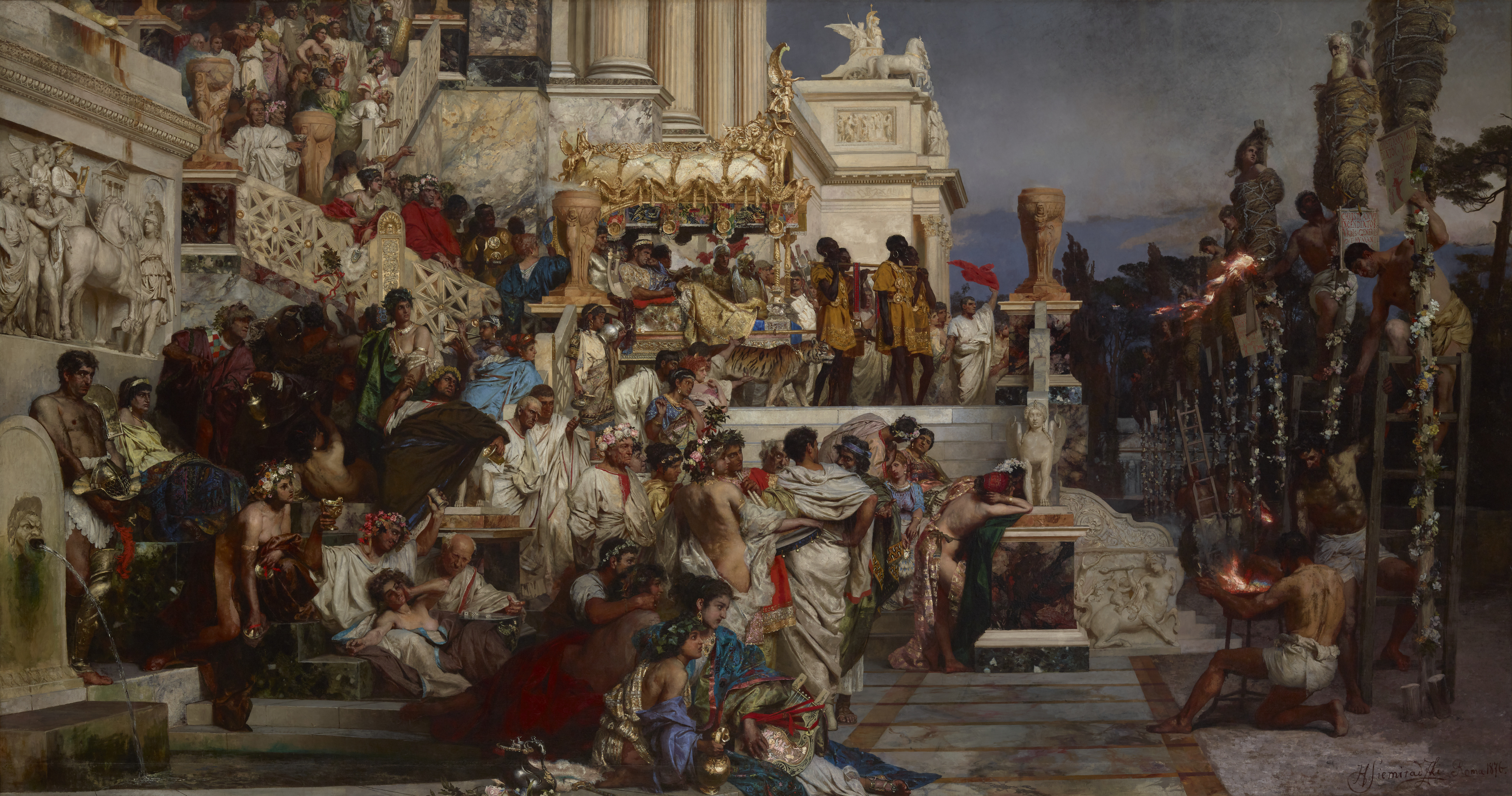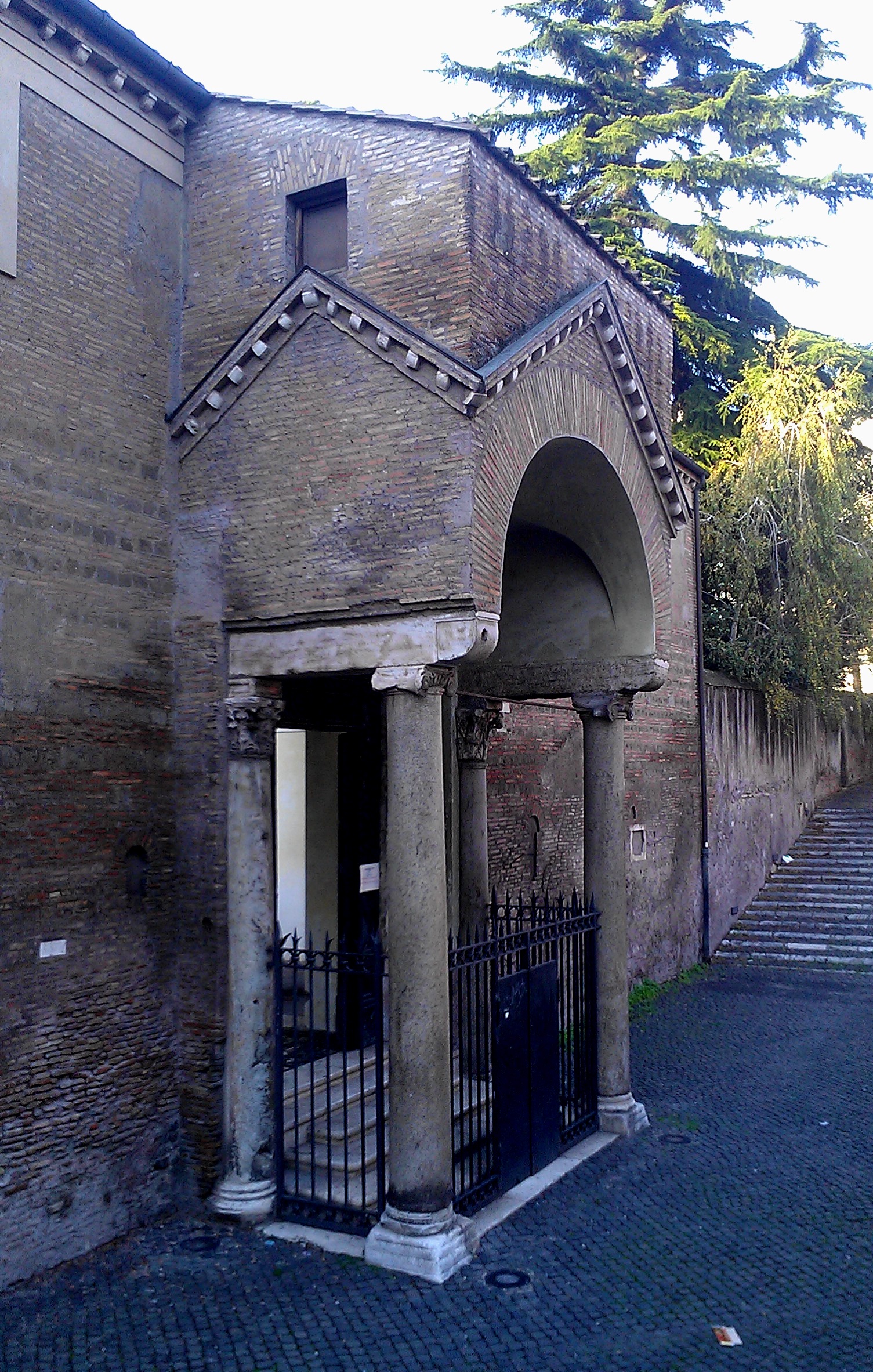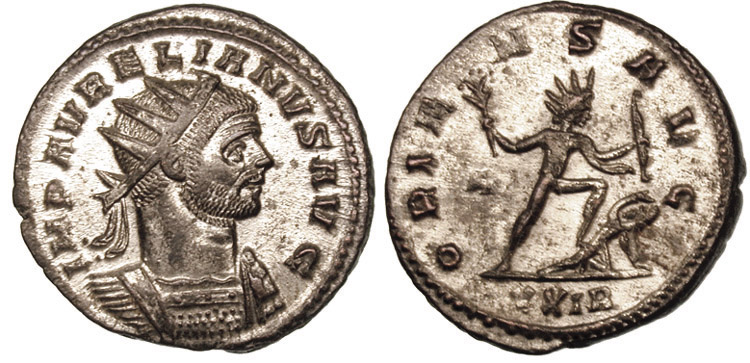|
San Clemente Al Laterano
The Basilica of Saint Clement () is a Latin Catholic minor basilica dedicated to Pope Clement I located in Rome, Italy. Archaeologically speaking, the structure is a three-tiered complex of buildings: (1) the present basilica built just before the year 1100 during the height of the Middle Ages; (2) beneath the present basilica is a 4th-century basilica that had been converted out of the home of a Roman nobleman, part of which had in the 1st century briefly served as an early church, and the basement of which had in the 2nd century briefly served as a mithraeum; (3) the home of the Roman nobleman had been built on the foundations of republican era villa and warehouse that had been destroyed in the Great Fire of AD 64. History This ancient church was transformed over the centuries from a private home that was the site of clandestine Christian worship in the 1st century to a grand public basilica by the 6th century, reflecting the emerging Catholic Church's growing legitimacy ... [...More Info...] [...Related Items...] OR: [Wikipedia] [Google] [Baidu] [Amazon] |
Rome
Rome (Italian language, Italian and , ) is the capital city and most populated (municipality) of Italy. It is also the administrative centre of the Lazio Regions of Italy, region and of the Metropolitan City of Rome. A special named with 2,746,984 residents in , Rome is the list of cities in the European Union by population within city limits, third most populous city in the European Union by population within city limits. The Metropolitan City of Rome Capital, with a population of 4,223,885 residents, is the most populous metropolitan cities of Italy, metropolitan city in Italy. Rome metropolitan area, Its metropolitan area is the third-most populous within Italy. Rome is located in the central-western portion of the Italian Peninsula, within Lazio (Latium), along the shores of the Tiber Valley. Vatican City (the smallest country in the world and headquarters of the worldwide Catholic Church under the governance of the Holy See) is an independent country inside the city boun ... [...More Info...] [...Related Items...] OR: [Wikipedia] [Google] [Baidu] [Amazon] |
Great Fire Of Rome
The Great Fire of Rome () began on 19 July 64 AD. The fire started in the merchant shops around Rome's chariot stadium, Circus Maximus. After six days, the fire was brought under control, but before the damage could be assessed, the fire reignited and burned for another three days. In the aftermath of the fire, nearly three quarters of Rome had been destroyed (10 out of 14 districts). According to Tacitus and later Christian tradition, Emperor Nero blamed the devastation on the Christian community in the city, initiating the empire's first persecution against the Christians. Other contemporary historians blamed Nero's incompetence but it is commonly agreed by historians nowadays that Rome was too densely populated and inadequately prepared to effectively deal with large scale disasters, including fires, and that such an event was inevitable. Background Previous recorded fires in Rome Fires in Rome were common, especially in houses, and fires that had occurred previously i ... [...More Info...] [...Related Items...] OR: [Wikipedia] [Google] [Baidu] [Amazon] |
Pope Zosimus
Pope Zosimus was the bishop of Rome from 18 March 417 to his death on 26 December 418. He was born in Mesoraca, Calabria. Zosimus took a decided part in the protracted dispute in Gaul as to the jurisdiction of the See of Arles over that of Vienne, Isère, Vienne, giving energetic decisions in favour of the former, but without settling the controversy. His fractious temper coloured all the controversies in which he took part, in Gaul, Africa and Italy, including Rome, where at his death the clergy were very much divided. Family background According to the ''Liber Pontificalis'', Zosimus was a Greeks, Greek and his father's name was Abramius. Historian Adolf von Harnack deduced from this that the family was of Jewish origin, but this has been rejected by Louis Duchesne. Pontificate The consecration of Zosimus as bishop of Rome took place on 18 March 417. The festival was attended by Bishop Patroclus of Arles, who had been raised to that see in place of Bishop Heros of Arles, who ha ... [...More Info...] [...Related Items...] OR: [Wikipedia] [Google] [Baidu] [Amazon] |
Sol (Roman Mythology)
Sol is the personification of the Sun and a god in ancient Roman religion. It was long thought that Rome actually had two different, consecutive sun gods: The first, Sol Indiges (), was thought to have been unimportant, disappearing altogether at an early period. Only in the late Roman Empire, scholars argued, did the solar cult re-appear with the arrival in Rome of the Syrian Sol Invictus (), perhaps under the influence of the Mithraic mysteries. Publications from the mid-1990s have challenged the notion of two different sun gods in Rome, pointing to the abundant evidence for the continuity of the cult of Sol, and the lack of any clear differentiation – either in name or depiction – between the "early" and "late" Roman sun god. Etymology The Latin ''sol'' for " Sun" is believed to originate in the Proto-Indo-European language, as a continuation of the heteroclitic ''* Seh2ul- / *Sh2-en-'', and thus cognate to other solar deities in other Indo-European languages: Germani ... [...More Info...] [...Related Items...] OR: [Wikipedia] [Google] [Baidu] [Amazon] |
Antoninus Pius
Titus Aelius Hadrianus Antoninus Pius (; ; 19 September 86 – 7 March 161) was Roman emperor from AD 138 to 161. He was the fourth of the Five Good Emperors from the Nerva–Antonine dynasty. Born into a senatorial family, Antoninus held various offices during the reign of Emperor Hadrian. He married Hadrian's niece Faustina the Elder, Faustina, and Hadrian adopted him as his son and successor shortly before his death. Antoninus acquired the cognomen Pius after his accession to the throne, either because he compelled the Roman Senate, Senate to Roman imperial cult, deify his adoptive father, or because he had saved senators sentenced to death by Hadrian in his later years. His reign is notable for the peaceful state of the Empire, with no major revolts or military incursions during this time. A successful military campaign in Geography of Scotland, southern Scotland early in his reign resulted in the construction of the Antonine Wall. Antoninus was an effective administrator, ... [...More Info...] [...Related Items...] OR: [Wikipedia] [Google] [Baidu] [Amazon] |
Cautes And Cautopates
Cautes and Cautopates are torch-bearers depicted attending the god Mithras in the icons of the ancient Roman cult of Mithraism, known as Tauroctony. Cautes holds his torch raised up, and Cautopates holds his torch pointed downward. Interpretation In Mithraic images, Mithras either represents the sun, or is a close friend of the sun god Helios or Sol Invictus (Latin language, Latin: ''the invincible sun'') with whom Mithras dines. So attendants Cautes and Cautopates are supposed to represent the stations of sunrise and sunset respectively, or perhaps the spring and autumn equinoxes, or equivalently the ascending (spring) and descending (autumnal) Orbital node#Earth orbit nodes, nodes of the Sun's apparent path on the celestial sphere. If eclipses of the sun and moon formed part of Mithraic symbolism, they could also represent the ascending and descending Lunar node, nodes where the Moon crosses the ecliptic. Depictions Both are depicted as smaller than Mithras to emphasize ... [...More Info...] [...Related Items...] OR: [Wikipedia] [Google] [Baidu] [Amazon] |
Tauroctony
''Tauroctony'' is a neologism, modern name given to the central cult image, cult reliefs of the Mithraic Mysteries in the Roman Empire. The imagery depicts Mithras killing a bull, hence the name ''tauroctony'' after the Greek word (, "bull killing"). A ''tauroctony'' is distinct from the sacrifice of a bull in ancient Rome called a ; the was mainly part of the unrelated cult of Cybele. Despite the name, the scene is symbolic, and to date there is no known physical evidence that patrons of the Roman cult ever performed such a rite. Like all Greco-Roman mysteries, the Mithraic Mysteries was limited to initiates, and there is very little known about the cult's beliefs or practices. However, several images of the bull include a ribbon or blanket, which was a Roman convention to identify a sacrificial animal, so it is fairly certain that the killing of the bull represents a sacrificial act. Because the main bull-killing scene is often accompanied by explicit depictions of the sun, m ... [...More Info...] [...Related Items...] OR: [Wikipedia] [Google] [Baidu] [Amazon] |
Apse
In architecture, an apse (: apses; from Latin , 'arch, vault'; from Ancient Greek , , 'arch'; sometimes written apsis; : apsides) is a semicircular recess covered with a hemispherical Vault (architecture), vault or semi-dome, also known as an ''exedra''. In Byzantine architecture, Byzantine, Romanesque architecture, Romanesque, and Gothic architecture, Gothic Architecture of cathedrals and great churches, Christian church architecture, church (including cathedral and abbey) architecture, the term is applied to a semi-circular or polygonal termination of the main building at the liturgical east and west, liturgical east end (where the altar is), regardless of the shape of the roof, which may be flat, sloping, domed, or hemispherical. Smaller apses are found elsewhere, especially in shrines. Definition An apse is a semicircular recess, often covered with a hemispherical vault. Commonly, the apse of a church, cathedral or basilica is the semicircular or polygonal termination to the ... [...More Info...] [...Related Items...] OR: [Wikipedia] [Google] [Baidu] [Amazon] |
CIMRM
''Corpus Inscriptionum et Monumentorum Religionis Mithriacae'' (''CIMRM'') is a two-volume collection of inscriptions and monuments relating primarily to the Mithraic Mysteries. It was compiled by Maarten Jozef Vermaseren and published at The Hague by Martinus Nijhoff Publishers Brill Academic Publishers () is a Dutch international academic publisher of books, academic journals, and databases founded in 1683, making it one of the oldest publishing houses in the Netherlands. Founded in the South Holland city of Leiden, ..., 1956, 1960 in 2 vols. Publication was sponsored by the Royal Flemish Academy and the Netherlands Organization for Pure Research. It is based on an earlier 1947 work of the same title that began as an entry in a competition organized by the Department of Fine Arts and Literature of the Flemish Academy. It is viewed as "an undiscriminating work", with "unpredictable topographic zig-zagging", but it remains indispensable for its access to the great bulk of th ... [...More Info...] [...Related Items...] OR: [Wikipedia] [Google] [Baidu] [Amazon] |
Mithraic Mysteries
Mithraism, also known as the Mithraic mysteries or the Cult of Mithras, was a Roman mystery religion focused on the god Mithras. Although inspired by Iranian worship of the Zoroastrian divinity ('' yazata'') Mithra, the Roman Mithras was linked to a new and distinctive imagery, and the degree of continuity between Persian and Greco-Roman practice remains debatable. The mysteries were popular among the Imperial Roman army from the 1st to the 4th century AD. Worshippers of Mithras had a complex system of seven grades of initiation and communal ritual meals. Initiates called themselves ''syndexioi'', those "united by the handshake". They met in dedicated '' mithraea'' (singular ''mithraeum''), underground temples that survive in large numbers. The cult appears to have had its centre in Rome, and was popular throughout the western half of the empire, as far south as Roman Africa and Numidia, as far east as Roman Dacia, as far north as Roman Britain, and to a lesser ex ... [...More Info...] [...Related Items...] OR: [Wikipedia] [Google] [Baidu] [Amazon] |
Insula (building)
In Roman architecture, an ''insula'' (Latin for "island", : ''insulae'') was one of two things: either a kind of apartment building, or a city block. This article deals with the former definition, that of a type of apartment building. ''Insulae'' housed most of the urban citizen population of ancient Rome's massive population ranging from 800,000 to 1 million inhabitants in the early imperial period. Residents of an ''insula'' included ordinary people of lower- or middle-class status (the ''plebeians'') and all but the wealthiest from the upper-middle class (the ''equites''). The traditional elite and the very wealthy lived in a ''domus'', a large single-family residence, but the two kinds of housing were intermingled in the city and not segregated into separate neighbourhoods. The ground-level floor of the ''insula'' was used for '' tabernae'', shops and businesses, with living spaces above. Like modern apartment buildings, an ''insula'' might have a name, usually referring to ... [...More Info...] [...Related Items...] OR: [Wikipedia] [Google] [Baidu] [Amazon] |








